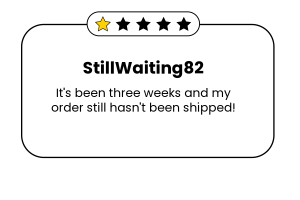1.3 Problem solving
Problems come up in all aspects of life: work, study, relationships, etc. Problems can range from slight inconveniences like misplacing your keys, to more critical issues such as dealing with time-sensitive emergencies in the workplace. Different problems require different solutions — that’s why understanding problem-solving skills and strategies can help you face difficult situations as they appear.
“A problem well stated is a problem half solved” – Charles Kettering
“Life is a continuous exercise in creative problem solving” – Michael J. Gelb
“No problem can withstand the assault of sustained thinking” – Voltaire
Reflect
- What do you think these quotes mean? How would you express these ideas in your own words?
- What do you think about these quotes? Do you agree with them? Why? Why not?
- Can you think of a time when you successfully solved a problem? What steps did you take to solve the problem?
- What skills do you think people need to engage to solve problems?
What is problem solving?
Problem-solving may seem straightforward at first – it’s finding a solution to a problem, right? But are you aware of all the higher-order thinking skills that come into play when someone is solving a problem?
To begin, someone might critically analyse and evaluate the situation to identify the problem. Then, use reflective thinking to figure out why the problem occurred and how it can be resolved or prevented from happening again. They’ll look at the problem from different angles and recognise any biases that may have influenced the situation or could impact the solution.
Next, they could use strategies and creative thinking to generate potential solutions. Using logic and reasoning, they’ll decide which solution should be implemented and tested.
Finally, they should reflect on their problem-solving process and save their insights for future use.
Why is it important to develop problem-solving skills?
When you understand how many higher-order thinking skills go into solving problems, it’s clear to see why it’s such a highly valued skill. Intentionally building your problem-solving capabilities will help you grow personally and professionally.
People with good problem-solving skills:
- can make confident decisions in life and at work
- build resilience and can recover from setbacks because they believe in their ability to solve future problems
- are adaptable and able to see challenges as opportunities not roadblocks
- are more successful in their careers – they are attractive employees because they can work independently and progress in their roles, and can be trusted to handle challenging situations
- can think creatively and innovate – they’re great entrepreneurs
- can collaborate with others and enhance the work environment by focusing on solving problems rather than dwelling on them
- have better personal relationships because they can use their problem-solving skills for conflict resolution
- can save themselves and their employers lots of money by addressing financial problems early
- make responsible health and wellbeing decisions and address lifestyle problems.
Problem-solving skills are important across all disciplines and work areas. Check out the scenarios below to see how professionals in two different industries use problem-solving skills to manage situations that have come up in their jobs.
A nursing problem: patient care
![]()
![]()
Javier is a nurse caring for an elderly patient called Moe. Moe is not adhering to his complex medication regimen, even though Javier has gone over it with him multiple times. Javier is frustrated and Moe is upset. It is important for his health that Moe takes the correct medications at the right times.
- What reasons can you think of for why Moe might not be adhering to his medication regimen?
- Can you think of some steps Javier could take to solve this problem?
Expand the section below to see what Javier does.
A business problem: delays and dissatisfaction


Yu works for a manufacturing company that is receiving many negative online reviews from customers due to delays in production. She’s been tasked with solving this problem and preventing more negative reviews.
Problem-solving strategies
When you’re presented with a problem—whether it is a complex mathematical problem or a broken printer, how do you solve it?
Before finding a solution to the problem, the problem should first be clearly identified through gathering information and gaining a thorough understanding of the issue at hand. After that, one of many problem-solving strategies can be applied, hopefully resulting in a solution.
A problem-solving strategy is a plan of action used to find a solution. Different strategies have different action plans associated with them. For example, a well-known strategy is trial and error. The old adage, “If at first you don’t succeed, try, try again” describes this strategy. The following pages in this chapter explore trial and error and other strategies and approaches for solving problems. Understanding and implementing these strategies will help you manage the problems that come your way.
Reflect
- How do you usually approach problem solving?
- Do you know or use any specific problem-solving strategies?
This page includes content adapted from “7.3 Problem-solving” by OpenStax College licensed under CC BY 4.0

